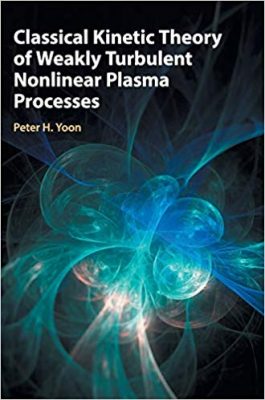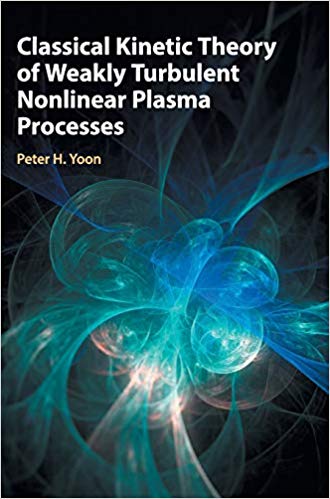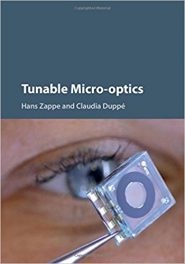 Author: Peter H. Yoon
Author: Peter H. Yoon
Publisher: Cambridge University Press – 352 pages
Book Review by: Sonu Chandiram
The author Peter H. Yoon explains in the Preface that plasma is an ionized gas. In such substances, dynamical processes are predominantly by collective behavior, rather than that od individual particle interactions.
Plasma gas then, is often seen as free of inter-particle collisions. Note however, that it is important to know the exact nature of plasma particles, including the single-particle behavior of plasma. Yoon writes: “Often the description of plasma is incomplete if the discrete particle effects are not properly taken into account.”
This book takes a look at the kinetic theory of weakly turbulent nonlinear processes in plasma. That is what helped form the foundation of modern plasma physics. It is essentially, a systematic overview of the kinetic theory of weak plasma turbulence from a modern perspective.
It covers:
- The fundamentals of weak turbulence theory
- The foundational concepts
- The mathematical and technical details
- Key obstacles to space plasma applications
- The origin of non-thermal charged particle population
- Radio burst phenomena from the sun.
- Both collective and discrete particle effects
This book provides a valuable reference for researchers looking to familiarize themselves with plasma weak turbulence theory.
Here below is a listing of its 10 chapters organized around four Parts:
- Part I – Vlasov Weak Turbulence Theory: Electrostatic Approximation
- Nonlinear Electrostatic Equations for Collisionless plasmas
- Electrostatic Vlasov Weak turbulence Theory: Wave Kinetic Equation
- Electrostatic Vlasov Weak turbulence Theory: Particle Kinetic equation
- Part II – Klimontovich Weak Turbulence Theory: Electrostatic Approximation
- Electrostatic Klimontovich Weak Turbulence Theory
- Spontaneous Emission and Collisional Kinetic equation
- Langmuir Turbulence anf Elecron Kappa Distribution
- Part III – Vlasov Weak Turbulence Theory: Electromagnetic Formalism
- Nonlinear Electromagnetic Equations in Vlasov Plasmas
- Electromagnetic Vlasov Weak Turbulence Theory
- Part IV – Klimontovich Weak Turbulence Theory: Electromagnetic Formalism
- Electromagnetic Klimontovich Weak Turbulence Theory:
- Applications of Electromagnetic Klimontovich Weak Turbulence Theory:
What essentially is the purpose of this book? In the words of its author Peter Yoon, it is:
“To present essential ideas for treating the weak plasma turbulence on the basis of kinetic theory. In order to simplify the discussion, the plasma of interest is considered to be free of influence from externally applied electric or magnetic fields.”
“The plasma is also considered as uniform on average, without spatial inhomogeneity associated with it. Despite thse simplifying assumptions, basic theoretical tools and concepts developed in the present monograph can, in principle, be applied to situations in which the plasma is immersed in external fields, especially the ambient magnetic field.”
“Realistic laboratory or space / astrophysical plasmas are magnetized. Consequentially, applications of the theory developed in this book are limited to high-frequency phenomena for which the approximation of field-free plasma may be valid.”
Yoon points out that the weak plasma turbulence theory is a perturbative nonlinear theory, and the essential formalism was developed by the pioneers of modern plasma physics beginning in the late 1950 and 1960s, and continued on through the early 1980s.
So this book essentially provides an overview of the various aspects of the kinetic theory of weak plasma turbulence.
Editor:
Peter H. Yoon is a senior research scientist at the Institute of Physical Science and Technology at the University of Maryland, international scholar and professor at Kyung Hee University in Seoul, South Korea, and senior research leader at Korea Astronomy and Space Science Institute. He is a leading expert in theoretical space plasma physics and a Fellow of the American Physical Society.







